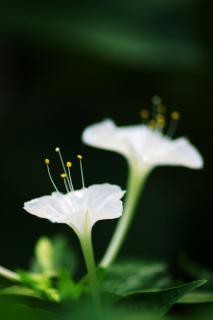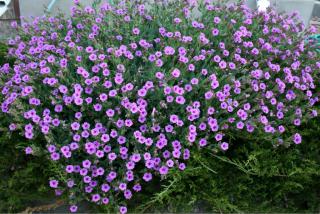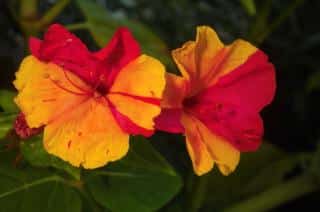

Mirabilis is a family of flower shrubs that are amazing when planted in a garden.
Mirabilis key facts
Name – Mirabilis species
Family – Nyctaginaceae
Type – annual or perennial
Height – 3 feet (90 cm)
Exposure – full sun
Soil: ordinary, well-drained – Flowering: June to September
Each species is unique but care is often similar. Proper care for most of the species is the same. In all cases, Mirabilis tends to spread easily, so carefully check its boundaries or it will turn invasive.
 Mirabilis plants are often sold for planting in Spring.
Mirabilis plants are often sold for planting in Spring.
Once your Mirabilis is established, it will bear seeds. It’s easy to grow Mirabilis from seed.
Make sure drainage is good enough that water never accumulates around the roots.
Since most mirabilis species bloom in the afternoon or evening, it’s best to plant it in a spot that gets afternoon sun. This is on the western side of a house, garden bed, or hedge. The blooming will be more intense!
 Mirabilis plants don’t need any pruning. They won’t develop any woody parts and in colder climates will die back in winter.
Mirabilis plants don’t need any pruning. They won’t develop any woody parts and in colder climates will die back in winter.
When the blooming starts, you can trigger more blooms by removing dead or wilted flowers.
Since seeds have a high rate of germination, any patch of Mirabilis will quickly start spreading after the first year.
Mirabilis plants aren’t frost hardy. In case of frost, airborn parts will die off. However, if the freezing is mild or if you’ve added mulch, they will certainly sprout from the tuber (roots) in spring.
The most famous Mirabilis flower is Mirabilis jalapa, also called the four o’clock flower. It is commonly sold in garden stores for its fragrant flowers.
Interesting Mirabilis species include the following:
All Mirabilis plants originated in the Americas.
 Plants of the Mirabilis family are often called four o’clock flowers. This is because their blooms always tend to open in the second half of the afternoon, around 4 pm.
Plants of the Mirabilis family are often called four o’clock flowers. This is because their blooms always tend to open in the second half of the afternoon, around 4 pm.
The sun’s heat starts to diminish, which triggers opening of the flowers. More pollinators are active at dusk thanks to the cooler temperatures.
Flowers are fragrant and release a deliciously scented odor during the entire night.
If you’re fond of sleeping with windows open in summer, plant Mirabilis under your room window outside. The fragrance will call on peaceful and restful dreams and lure you to sleep!
Read also: